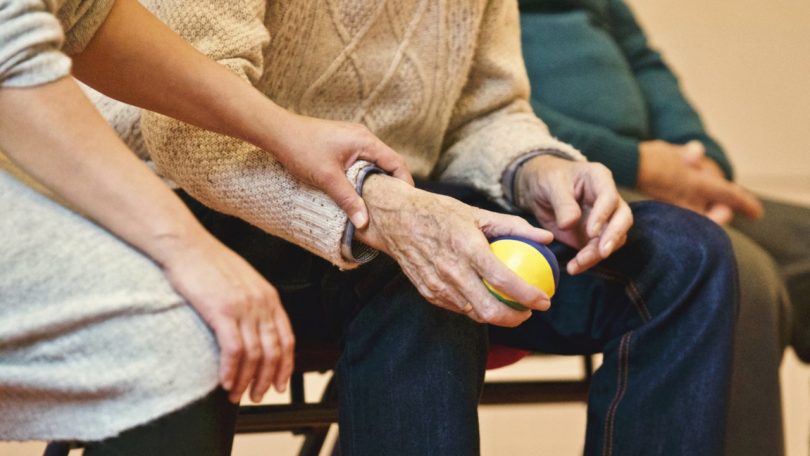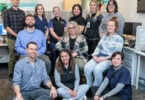As health care providers we’re often eager to use the latest technologies so we can provide leading care. So what happens when we do introduce new and interesting technologies into care? How do our staff adapt their practice to using them? Are our patients better off with these technologies?
These are questions Holy Family Hospital’s Occupational Therapy department is trying to answer with their new virtual reality system. They were invited to participate in a nine month research project on the integration of Virtual Reality (VR) into stroke rehabilitation by the University of Ottawa Bruyere Research Institute, sponsored by the Canadian Partnership for Stroke Recovery and a personal donation from Tony and Elizabeth Graham.

“Occupational Therapy is here to help develop life skills so our patients can achieve independence in their living. This is just another tool in our toolbox to help our patients get there,” said Lori Sinclair, Occupational Therapist at Holy Family Hospital.
With their new virtual reality program, occupational therapists are able to bring new, fun, and engaging games and activities to our rehabilitation patients who have experienced a stroke so they can relearn and better control movement.
It works like this:
- A patient arrives for their appointment with the occupational therapist.
- During the initial appointment, the therapist will do all their basic assessments to understand what a patient’s specific goals are and what their ability level is.
- Then they’ll have an opportunity to try their hand at a few of the activities and games available through the VR system. No goggles required.

The program has a variety of games and activities that challenges patients but also trains their bodies and their minds. Each game and activity can have a customized difficulty for each patient to match their ability level.
Not just a walk in the park
The program allows therapists to assess whether a patient is able to recognize obstacles and danger, and even assess if they can understand certain words and instructions.
In addition to benefiting our patients, this new technology adds to our understanding of how clinicians adapt to new, innovative health care technology. This virtual reality system aims to assess how occupational therapists adjust to using new technologies in their care. Holy Family Hospital was given all the technology needed, including a high definition TV, the VR system, the therapeutic program, Jintronix and an orientation on the system, to start using the technology in their practice.
Even though the study is researching the impact on the therapists, and the team has only had the program for a few weeks, they are already seeing how virtual reality benefits the patients. According to Lori, she believes her patients are more alert and more engaged because the system is stimulating with movement, colour and sound.
Patient safety comes first
In addition to being fun, the program also adds a layer of safety that didn’t exist before. Patients are able to practice skills such as walking and recognizing dangerous situations in a controlled environment where supports are available if something doesn’t go quite as planned. Before, to practice these skills, occupational therapists would often take patients on walks outdoors where it’s a bit harder to predict what might happen.
“Safety is everything, and with this program we’re there to support them fully in a safe environment,” said Lori.
This program, in addition to regular OT therapy, helps patients work up to their goals of independent living or find their new level of independent living. Their enhanced body awareness and movement skills are anticipated to translate into better function as they participate daily in their life skills like shaving, cooking, and getting to and from the bathroom safely.
What’s next?
For Lori, she’d like to see how this technology could be improved to simulate real life experiences.
“I would like to see more of this kind of thing simulating a natural environment,” she said. “It is our hope that we will be able to benefit from acquiring similar technologies or programs in the future to benefit our patients.”
With all of the changes in technology that are happening at a rapid pace, Providence Health Care continues to put its best foot forward in adapting new programs and systems that serve to benefit our patients. Virtual Reality is simply the first step into a new world.





